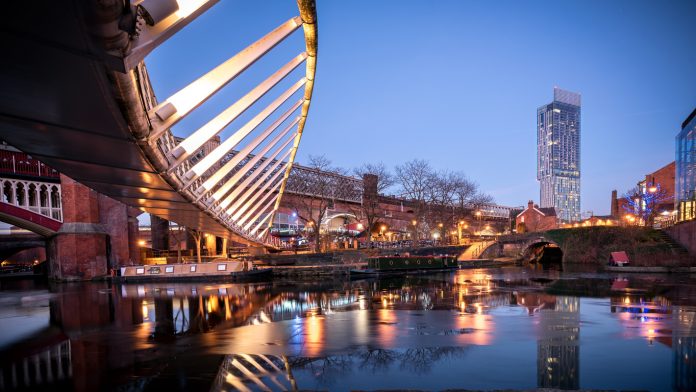Will “Look North” still be the mantra next year? We take a look at the reality behind claims that Manchester is now the “London of the north” and what that might mean for the housing market.

Demand still outstripping supply
Looking ahead, that’s the bottom line with regard to the Manchester housing market. High demand across most of the city’s residential areas is not being matched by supply. Continuing the trends of the past few years, the city has been identified as a likely hot spot for 2019. First rate internal and external transport links, including the MetroLink, Manchester Airport and the region’s motorway network, plus the highest rental yields in the UK, are all attractive to investors. The arrival of HS2 will undoubtedly add to the appeal.
The city’s cultural and sporting attractions, access to surrounding countryside, and the outstanding social vibe of its centre, all mean that Manchester life is hard to beat for quality and variety. It’s a city that oozes confidence and celebrates its history with style. Manchester’s cosmopolitan appeal and its forward-looking attitude are huge draws for young professionals in particular.
Brexit and the city

While London and the south east remain jittery about Brexit, the same can’t be said for property trends in the north, including Manchester. There’s no inoculation against economic uncertainty, of course, but it is the case that most commentators are predicting the best growth will be in regional housing markets. Recent predictions placed Manchester in the leading four for buying property in 2019, alongside Birmingham, Leicester, and Edinburgh. Manchester is well set to be a member of this group, since property prices here have led the way nationally for five out of six years.
“Resiliency” is one term that’s been heard frequently of late. With one report suggesting north-west housing values are likely to increase by nearly 22% in the next five years, it may well be that the famous resilience of the north will triumph over a less buoyant capital and south-east.
Why the student effect is here to stay
Manchester’s student population is one of the driving forces behind buoyant property prices in the city. However, it’s not just about student rental accommodation, although this clearly remains a key component of the buy-to-let market. A whopping near 30% of housing in the city is in the private rental sector and that’s undoubtedly influenced by students needing accommodation.
In fact, the great news for landlords is that by 2018 Manchester’s student sector was providing the highest rental yields nationwide – and that’s set to continue.
As with the general housing situation in the city and its greater region, there’s more demand than supply and the geographical range of student accommodation widens by the year. It’s not surprising, given that the student population of Manchester’s four world class higher education institutions is 99,000 and right on target for further increases. A more than tenfold increase on the 2002 numbers is expected to be achieved by 2027.
A city where incomers and returners both feel at home
That’s not all there is to the student effect on the housing market, though. A higher percentage of those who study at Manchester tend to stay in the region to start careers and families. There’s a high rate of returners after they finish courses elsewhere, too. Both populations are likely to continue renting for a time before stepping up to buy their own home. It all adds up to ongoing high demand for housing, particularly at entry level.
Where will the spotlight be in 2019?
Heywood was the surprise outsider in Mancunian property prices last year, with figures from the previous years for Hopwood district showing a jaw-dropping jump of 86% between 2016 and 2017. The focus is now increasingly on satellite towns and former mill villages once viewed as locations for a picturesque day out. Dobcross and neighbouring Saddleworth still retain traditional charms, while offering great restaurants, bistros and wine bars. Unsurprisingly, their rural location in the upper Tame Valley, next to the iconic Huddersfield Narrow Canal and right on the border with Yorkshire, is proving a huge draw for young families.
Affordable properties are still to be found in Greater Manchester in Oldham, Wigan and Rochdale. But for how much longer? Big news for 2019 is that Clayton, the neglected location close to the city centre that’s so far consistently missed out on investment, is finally set to get the council upgrade it needs.
Finally, Manchester’s urban core revival continues unabated, with converted industrial units the star residential performers in the city that’s the epitome of chic.







